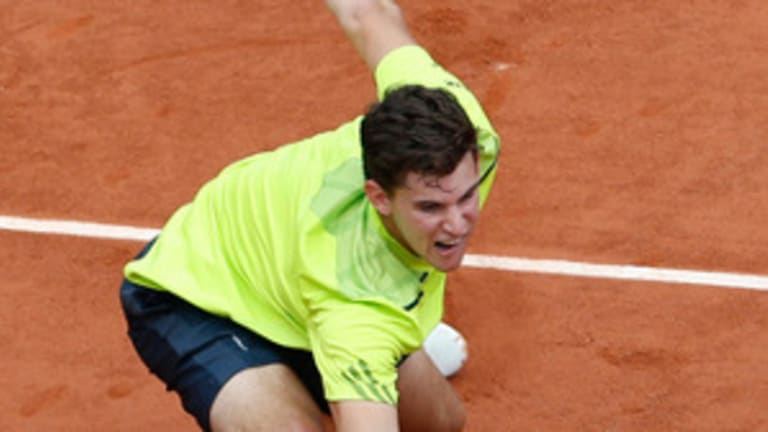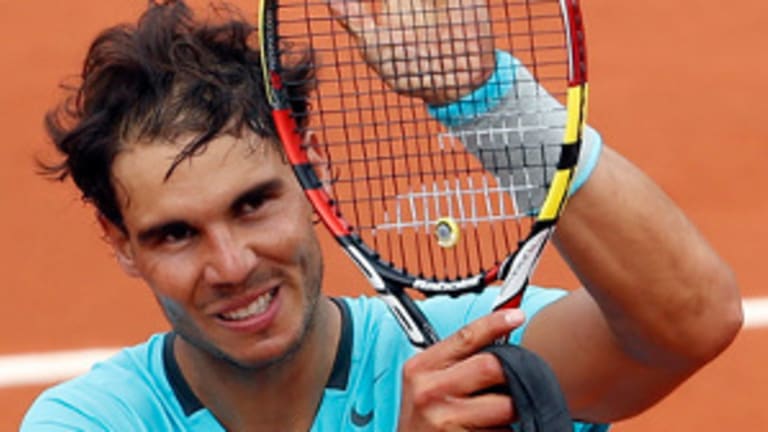PARIS—A twenty-year old kid full of sass and attitude walks into a bar. He sees the mechanical bull and thinks, “I can ride that sucker!” He puts his dollar into the slot, hops on, and in four seconds he’s lying in the sawdust flat on his back, blinking at the ceiling, wondering, “What happened?’
In tennis, Rafael Nadal is that mechanical bull (if you don’t believe me, check out his Nike logo), at least for the rare youngster who has the talent and confidence to hop on and see what the bull’s got.
The latest rowdy to take a crack at riding that bull is Dominic Thiem, a gifted Austrian who at age 20 was the youngest man in the second round here at Roland Garros. Thiem had never faced Nadal before, but then he hasn’t faced many people on a Grand Slam stage; this is just his second major. At this year’s Australian Open, he won four matches, three in qualifying.
Thiem was beaten by Nadal in fairly short order today, 6-2, 6-2, 6-3. The score, though, is no indication of the quality of this match. Nadal was in excellent form, and good thing he was. Thiem already appears to be one of the handful of players who, if he can’t stay on the bull until the buzzer, is capable of staying aboard a lot longer than almost all of his peers.
I watched this match mostly to study the new kid on the block, and received a clear and comprehensive education in the first set. Lost in a pair of voluminous shorts that hung down nearly to his knees and an equally baggy yellow shirt, Thiem looked smaller than 6’1”. He’s on the thin side, but still developing. He has a scattering of pimples on his rosy skin, a firm jaw, and a matinee idol’s shock of dark hair.
More relevant, Thiem combines two of the most potent assets in the contemporary game: Ferocious racquet-head speed—freely applied on nearly every swing from the baseline—and terrific range. I haven’t seen any player with a one-handed backhand hit so many aggressive shots while on the run and drawn so far off the court. I dread to think what kind of trouble Thiem might have caused had he been able to play from closer than six or seven yards behind the baseline.
Funny thing about that—Thiem already knows that.

